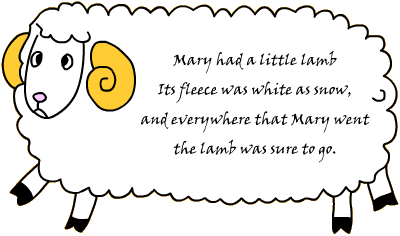aka "Lower" Criticism
![[Methuselah]](../images/meth/side_1_left.gif)
So the poor donkey turned to Balaam and said that...
OH NO! ...please don't tell me... GASP! ...it's Mr. Bible!
![[Mr. Bible]](../images/mrbible/side_1_right.gif)
That's right Equus asinus, I'm back to help explain my favorite critical method of all: T-E-X-T-U-A-L.
Don't forget it's also called Lower Criticism, and it's like totally only for short people like moi. Limbo Dude! How low can you go?!?
![[Mike]](../images/mike/limbo_1_bottom.gif)
Actually Lower Criticism has nothing to do with vertical measures. It's simply called "Lower" to distinguish it from Higher (or Literary) Criticism. That is, while "Higher Criticism" examines the various authors and the words that they used in writing the biblical text, Lower Criticism examines the actual texts themselves that record the Bible.
![[Mr. Bible]](../images/mrbible/pointing_1_bottom.gif)
![[Chart]](../images/illustrations/higher_lower.gif)
![[Jeff]](../images/jeff/smile_1_left.gif)
And sorry to disappoint you Mr. Bible, but in reality there is no such thing as THE Bible. Instead, there are many biblical manuscripts, or what scholars refer to as textual witnesses, that often record variant readings. These witnesses include some written in Hebrew such as the MT (Masoretic Text), the Dead Sea Scrolls, and the Samaritan Pentateuch, and others in Greek like the LXX (Septuagint), Latin like the Vulgate, and still others in Aramaic like the Peshitta and various Targumim, plus many more. We discussed these texts earlier in the translations section of BibleDudes.
![[Mike]](../images/mike/hawaiian_1_right.gif)
So Bible scholar dudes usually start doing Textual Criticism of the Hebrew Bible by examining the MT, and then they compare it to other textual witnesses. For the New Testament, Textual Criticism is wayyyyy more complicated. For example, there are about 5000 copies of the New Testament that are ancient. Yow! But either way, both Hebrew Bible and New Testament scholar dudes have to examine these texts in a search for variant readings, and then the job of the Textual Critic is to totally try to reconstruct the biblical Urtext.
![[Ur Lyre]](../images/other/urlyre_1_left.gif)
Perhaps I can be of assistance, as I used to live in Ur.
![[Cleopatra]](../images/cleo/confused_1_right.gif)
My darling lyre, Urtext isn't in reference to the Sumerian city Ur, but rather it's a German word meaning a theoretical proto-text, or a text that was the original one that someone composed. Then subsequently mistakes were introduced into the manuscript when scribes copied or translated the text through the years. Perhaps the darling Goliath here can offer us an example.
![[Goliath]](../images/other/goliath_1_left.gif)
Whassup? Before I had my head cut off by some punk kid I was a pretty tall guy. Just how tall? Excellent question. According to the MT's record of 1 Samuel 17:4, I was six cubits and a span, or about 9 feet 9 inches. But according to the LXX and one of the scrolls found at the Dead Sea, I was only four cubits and a span, or about 6 feet 9. So scholars doing textual criticism have to try to decide which version was more likely to be the original Urtext.
![[Jeff]](../images/jeff/armside_1_right.gif)
To help Bible scholars, there are two basic rules that they use in making these difficult decisions. The first is known as lectio brevior lectio potior, or in English, the shorter reading is the more probable reading, since scribes were more likely to add to a text to make it clearer. Let's take a look at an example. Following David's adulterous encounter with Bathsheba, Nathan asks David in 2 Samuel 12:9:
It would seem that a scribe at a later date added the words "the" and "word," and therefore the LXX's version would seem to be the better reading, because lectio brevior lectio potior. But, it is also possible that a scribe skipped words when copying a text, a mistake known as haplography, which Mr. Bible defines in greater detail below. In this case, the longer text is the more accurate reading. Therefore, scholars need to exercise judgment when using this rule, as well as the next.
![[Mike]](../images/mike/side_1_left.gif)
Awesome! The second rule is like lectio difficilior lectio potior, or "the more difficult reading is the more probable reading." You see, scribes might try to simplify a difficult verse or harmonize a passage that appeared to contradict other verses. Take for example Genesis 2:2, an important verse because it has to do with, like, when God finished creating. According to the MT, Targumim, and Latin Vulgate, God finished creation on the seventh day. BUT the LXX, the Peshitta and the Samaritan Pentateuch say that God finished on the sixth day. Like how long did creation last and what did God really do on the seventh day? Great questions! Sooooooooo, the textual witnesses that say God finished on the seventh day provide the more difficult reading, because they conflict with ideas about totally resting on the Sabbath. Therefore it is likely to be the original, and a later scribe like changed the seventh to the sixth to make sure readers knew that God didn't violate the Sabbath. Like lectio difficilior lectio potior dude!
![[Mr. Bible]](../images/mrbible/front_1_right.gif)
I left some other big fancy and fun words used in Textual Criticism below. They have to do with common mistakes made by scribes. Sayonara, BibleDudes!
![[Jeff]](../images/jeff/talking_1_left.gif)
Let's briefly apply these phenomena to the following:

![[Mike]](../images/mike/side_1_right.gif)
And if we like had a text that read:
Mary had a little lamb its fleece was white as white as snow...
Then this would be dittography ("white as" written 2x) because of parablepsis due to homoioteleuton (the scribe wrote "was white as" and then his/her eye skipped back to the earlier word "was" because it also ended in "as").
And if we had a text that read:
Mary had a little lamb its fleece was where that Mary went...
Then this would be haplography (missing text) because of parablepsis due to homoioarcton (the scribe wrote "its fleece was wh" and then his/her eye skipped forward to the same "wh" combination in the word "everywhere").
![[Methuselah]](../images/meth/dance_1_left.gif)
Oh yeah, that was certainly fun! Whatever... In the next section we'll do higher Horse Criticism.
![[Cleopatra]](../images/cleo/grin_1_right.gif)
He means Source Criticism,
my darlings.